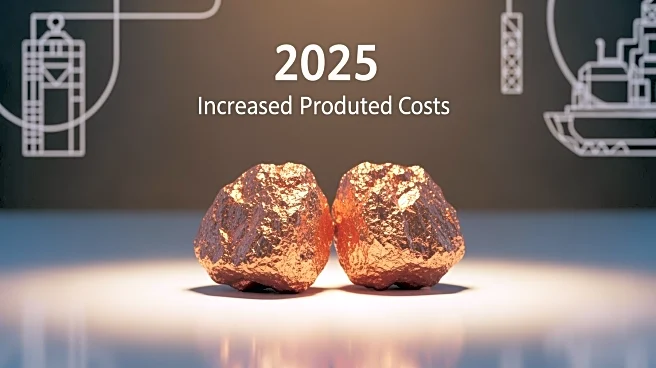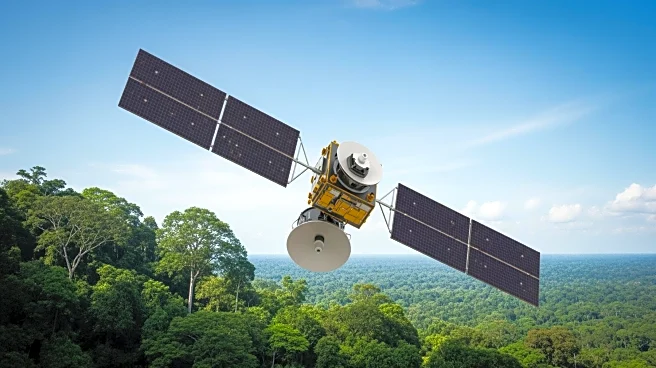What's Happening?
Lundin Mining Corporation has reported higher third-quarter earnings and sales, alongside an increase in its full-year copper production guidance. The company has also reduced its cost outlook following
strong operational performance at its Caserones and Chapada mines. These developments underscore Lundin Mining's focus on efficiency and its role in meeting the rising global demand for electrification metals. Despite these positive indicators, Lundin Mining's concentrated exposure to South America remains a significant risk factor due to potential regulatory and political challenges in the region.
Why It's Important?
The increase in copper production guidance and reduced cost outlook are crucial for Lundin Mining as they support the company's growth narrative in the context of global electrification demands. Copper is a key component in renewable energy technologies and electric vehicles, making Lundin Mining's operational improvements significant for the industry. However, the company's exposure to South America poses risks, as changes in mining regulations or political instability in countries like Chile and Brazil could impact operations. Investors and stakeholders must weigh these factors when considering Lundin Mining's future prospects.
What's Next?
Lundin Mining is projected to generate $3.6 billion in revenue and $364.3 million in earnings by 2028, based on current growth rates. The company will need to navigate potential regulatory changes in South America to maintain its production levels and cost efficiencies. Stakeholders will be closely monitoring political developments in the region, which could affect mining operations and profitability. The company's strategic decisions in response to these challenges will be critical in shaping its future performance.
Beyond the Headlines
The broader implications of Lundin Mining's developments include the potential impact on global copper supply and prices. As the demand for electrification metals grows, Lundin Mining's ability to increase production could influence market dynamics. Additionally, the company's exposure to South America highlights the importance of geopolitical stability in resource-rich regions, which can affect global supply chains and investment strategies.












